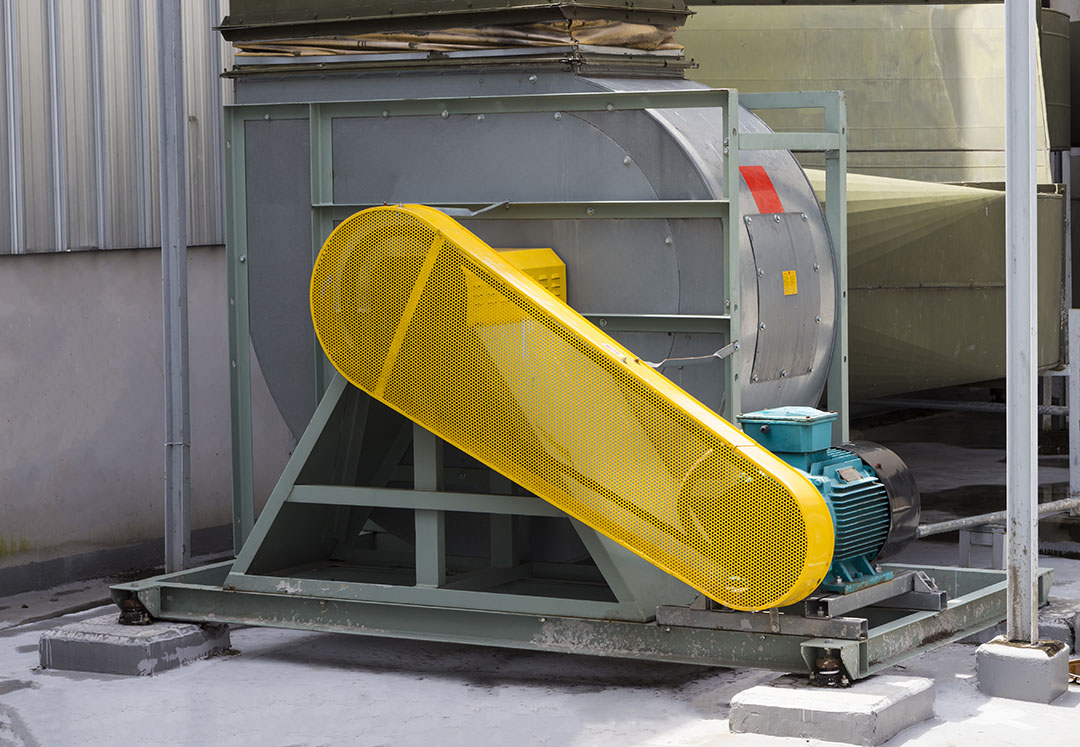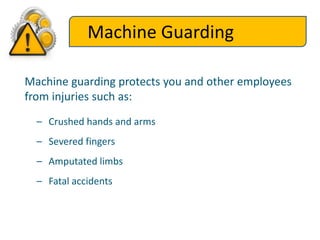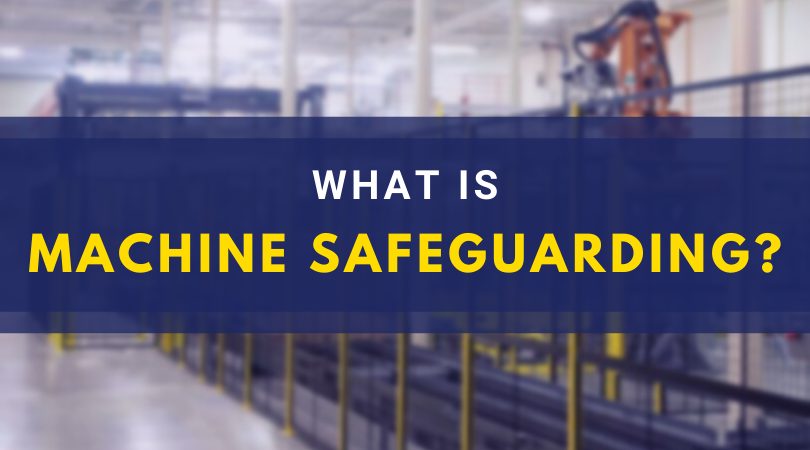which of the following is a type of machine safeguarding osha 10
Power transmission apparatus which feeds energy to machines. It may stop the machine if a hand or any part of the body is inadvertently placed in the danger area.
Moving machine parts have the potential to cause severe workplace injuries such as crushed fingers or hands amputations burns or blindness.

. Movable guard - a guard connected by mechanical means eg hinges or slides to the machine frame or an adjacent fixed element. One may also ask what are the 2 types of primary safeguarding methods. 1910219 b 1 Flywheels Flywheels 7 feet or less above the ground shall be guarded Sheet perforated or expanded metal or woven wire or with Guard rails between 15 to 20 inches from flywheel rim Toe board if within 12 inches of floor or extends into a pit All projections shall be covered.
Guards are barriers which prevent access to danger areas. 2 Fixed limited access guards. Moveable barrier that protects operator at point of operation before machine cycle can be started Must be interlocked so machine cannot begin cycle unless gate guard is in place Must be closed before machine can function Types A Gate.
These include moving belts arms. According to OSHA poor machine guarding leads to about 18000 amputations. Types of Machine Safeguards Gate devices.
All machines consist of three fundamental areas the point of operation the power transmission device and the operating controls. Machine guards sometimes referred to as safeguards are the protective devices that cover the hazardous or injurious parts of engineering machines. Guillotine cutters Shears Alligator shears Power presses Milling machines Power saws Jointers Portable power tools Forming rolls and calenders Source.
When the operation of a machine or. Primary Safeguarding Methods Two primary methods are used to safeguard machines. These can include the movement of rotating members reciprocating arms and cutting teeth.
Safeguards are essential for protecting workers from these preventable injuries. There are four general types of guards and well discuss them in the next section. Must prevent workers from lubricating a machine without removing the safeguard Which of the following should employers prevent in order to ensure the safety and health of workers in regards to machine guarding.
Machine guarding refers to protections on or around machines to safeguard human operators from hazardous conditions or injury. Interlock into the machines control system to stop operation when the sensing field photoelectric radio frequency or electromagnetic is disturbed. Such hazards include those created by points of operation in-running nip points rotating parts flying chips and sparks.
OSHA Quiz 8 Machine Guarding. Types of Machine Guarding Restraint Devices. How to use the safeguards and why.
Which of the following is a type of machine safeguarding. OSHA requires any worker who uses hazardous machines to undergo specific and detailed training in the following. Commonly Used Machine Guards 12 Table 2.
Machine safeguarding helps protect workers from preventable injuries in all three areas. A Pullback devices b Safety trip controls c Electro-mechanical sensing device d Two-hand control. A good machine safeguarding system eliminates the possibility of the operator or another worker placing parts of their bodies near hazardous moving parts.
Moving parts which are part of the machine or bigger system. These include barrier guards two-hand tripping devices and electronic safety devices among others. We can group machine safeguards under five general classifications.
The point of operation from where all the work is performed. This problem has been solved. General Industry Machine Guarding v030117 20 Created by OTIEC Outreach Resources Workgroup Machinery That Requires Guarding Machines that require point of operation guarding.
Allows user to take. A True b False. There are several mechanical motions that pose risks to workers.
OSHA requires that machine guarding be provided and maintained in a manner sufficient to protect machine operators and other persons present in machine areas from hazards associated with the operation of machines. Herein what are the most common types of machine guarding. The Occupational Safety and Health Administrations OSHAs requirements for machine guarding are found in 29 Code of Federal.
OSHA states that mechanical hazards are most likely to occur in three major areas. Horizontal Injection Molding Machines Interactive Safety Tour. The following are all machine safeguarding requirements except.
Any part of a machine which ___ while in operation can cause a hazard. A wide variety of mechanical motions and actions may present hazards to the worker. Wrists are connected by cords and secured to a fixed anchor point which limit operators hands from reaching the point of operation at any time.
Focuses on recognizing and controlling common amputation hazards associated with the operation and use of certain types of machines. The operator initiates the machine cycle. Interlocked guard - a guard attached and monitored by the control system in such a manner that it prevents the operation of hazardous machine functions under specified conditions.
The most common types of machine guards are. OSHA Occupational Safety and Health Administration regulations for machine guards are in place to prevent such occurrences. Any machine part function or process that may cause injury must be safeguarded.
A description and identification of the hazards associated with particular machines. One basic form of machine guarding is called guarding by location According to OSHA this involves positioning or designing a machine so that the hazardous parts are away from areas where employees work or walk or alternatively installing enclosure walls or fences that restrict access to machines. A safety device may perform one of several functions.
Employers are required to provide one or more types of guards to protect the machines operator and other employees. The following references aid in recognizing hazards from ineffective machine guarding. The machine guard must prevent hands arms and any other part of a workers body from making contact with dangerous moving parts.
Which of the following is a type of machine safeguarding. The safeguards themselves how they provide protection and the hazards for which they are intended.
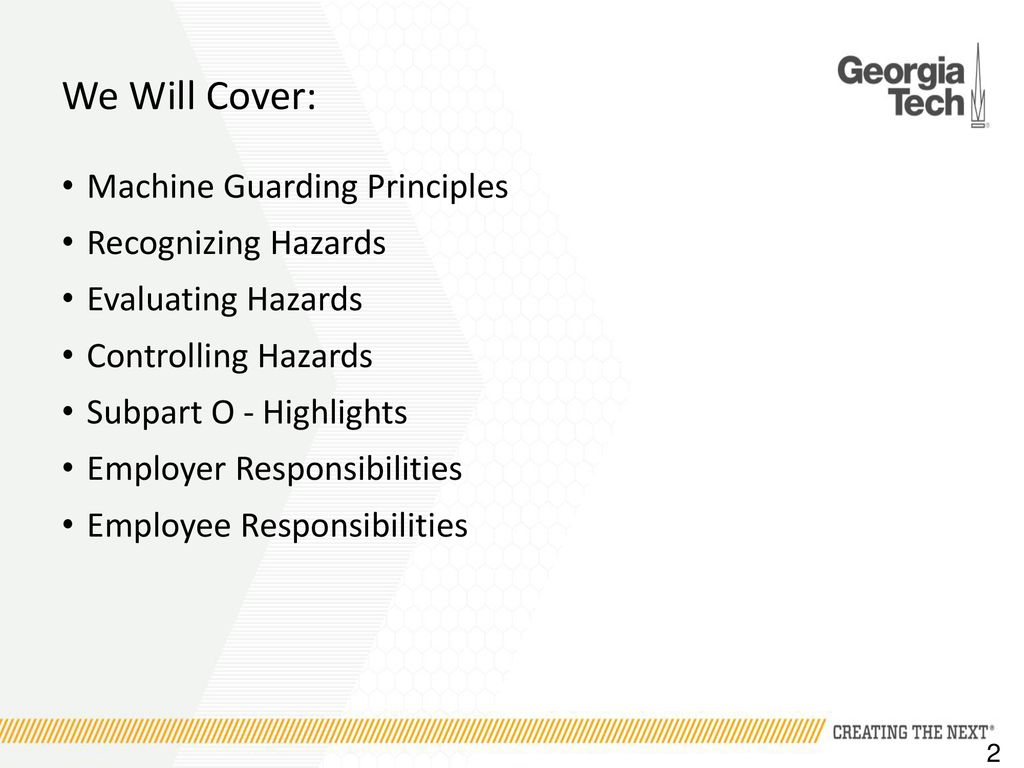
General Machine Guarding Ppt Download

Mechanical Hazards And Machine Safeguarding Ppt Video Online Download

Oshacademy Course 154 Machine Safeguarding Basic Module 2

Oshacademy Course 154 Machine Safeguarding Basic Module 2

Oshacademy Course 154 Machine Safeguarding Basic Module 1
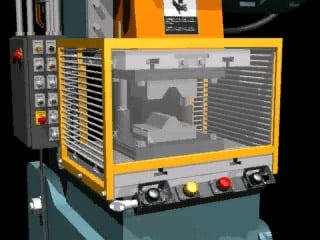
Machine Guarding 5 Most Common Ways To Keep You Safe

Basics Of Machine Guarding Hazards And Solutions March

Osha 2045 Machinery And Machine Guarding Standards Chesapeake Region Safety Council
Machine And Equipment Safety 1

Traumatic Machinery Accidents Carry A Heavy Price Tag 2017 03 27 Ishn
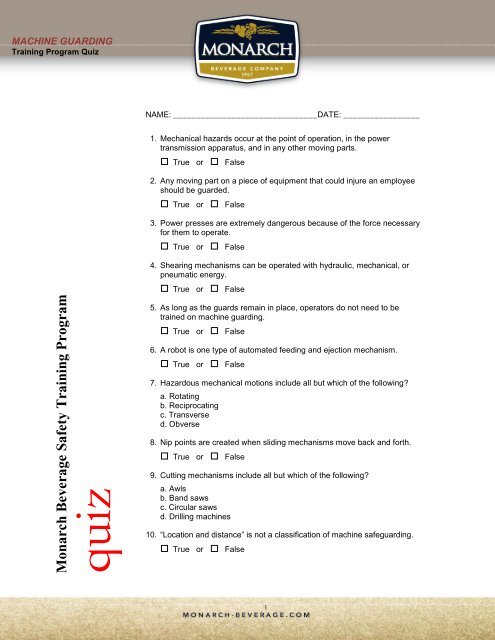
Machine Guarding Quiz Monarch Beverage
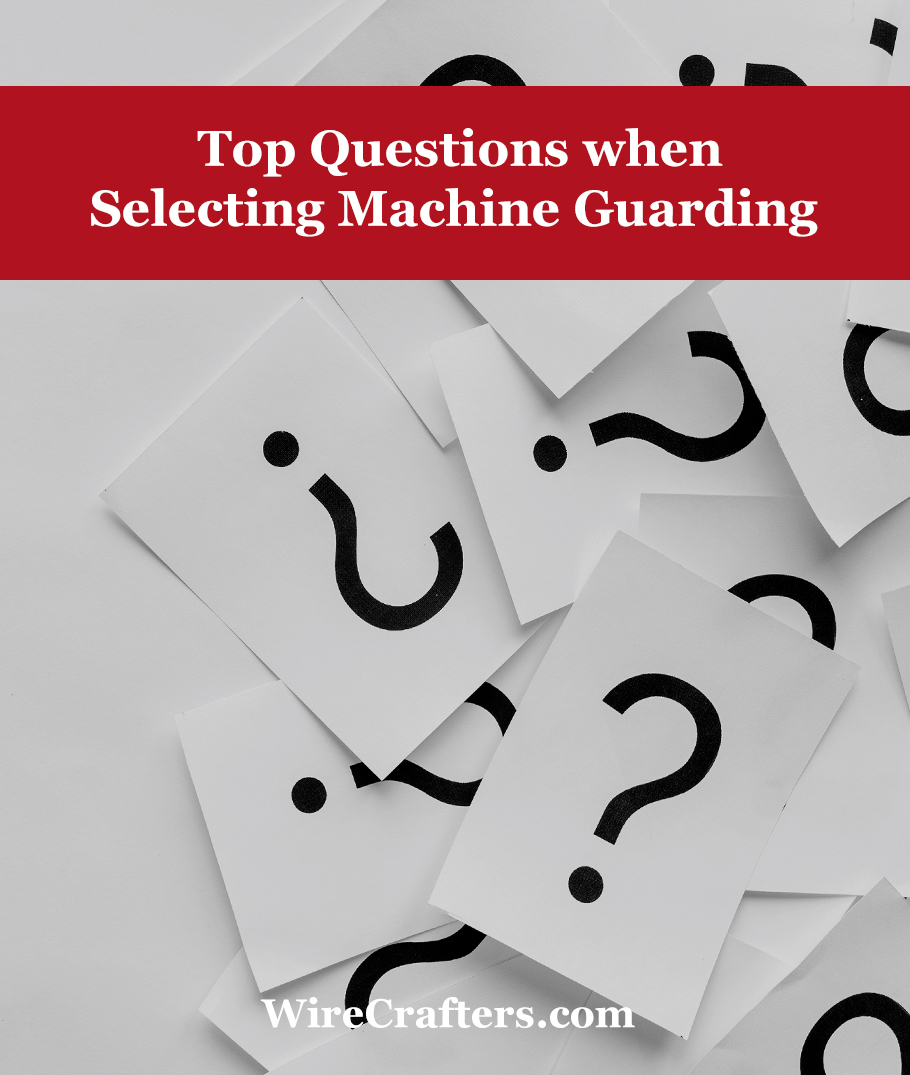
Top Questions When Selecting Machine Guarding Wirecrafters Blog

Oshacademy Course 154 Machine Safeguarding Basic Module 1

Machine Safeguarding 101 Rockford Systems Llc
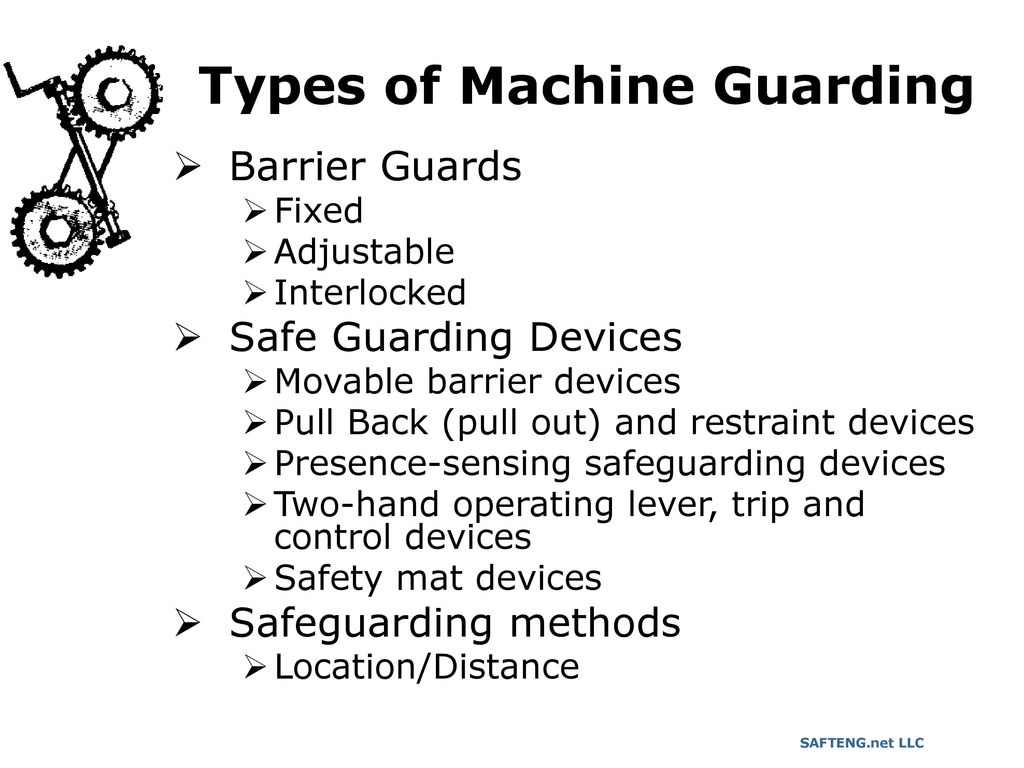
Fundamentals Of Machine Guarding Ppt Download

Machine Guarding Four Types Of Guards Citations Fixed Interlocked Ppt Video Online Download
